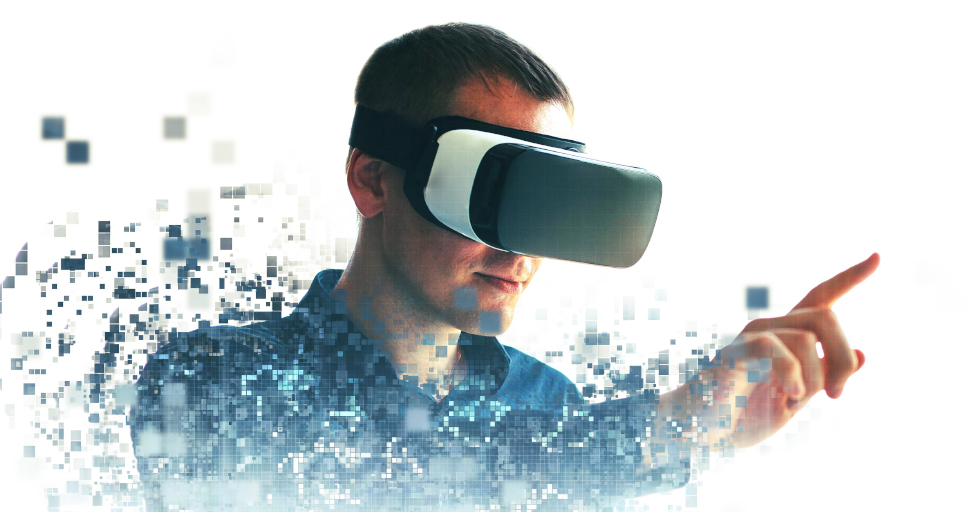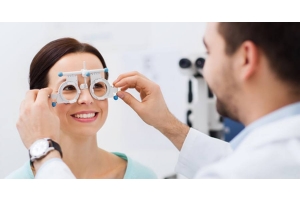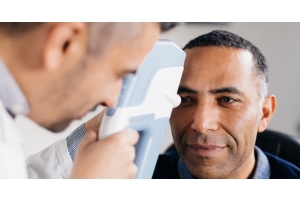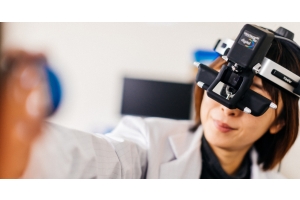
Virtual reality (VR) has incredible potential to change and create entire industries and enable new approaches in training and development, therapy, and entertainment.
As VR headsets and games become more mainstream, it is easy to wonder: is VR bad for your eyes?
Let's take a closer look at the connection between virtual reality and eye damage.
How Does VR Work?
In short, virtual reality systems use innovative computer technology to create an immersive experience. Unlike other user interfaces, VR systems immerse users inside a virtual environment. This is usually achieved by using a VR headset or a head-mounted display that stimulates as many senses as possible.
Two individual LCD monitors are positioned extremely close to the user's eyes to achieve this.
The Link Between VR and Eye Strain
Most VR systems employ two small LCD monitors that individually project at one eye. This creates a stereoscopic effect that offers users an illusion of depth.
The closeness of the screens to the user's eyes give optometric professionals serious cause for concern. Like focusing on a film or staring at a computer screen for extended periods, virtual reality systems can cause eye strain, including eye pain, discomfort, fatigue, and blurry vision.
Additionally, those who use virtual reality headsets tend to suffer eye strain and discomfort due to the continual focus on a highly-pixelated screen placed close to the eye.
Unfortunately, existing VR headsets fail to address the optic issues associated with near-to-eye equipment and devices.
Designers Must Work to Solve VR-Related Eye Strain
Most humans have an approximate field of view around 200 degrees. This includes about 60 degrees for peripheral vision and 140 degrees of binocular vision for depth perception.
Many of today's VR headsets offer a meagre 35-degree field of view, but increasing it to 60 degrees may help the user feel more immersed. In either case, headsets should mimic the way human vision works and expanding the field of view will result in a more comfortable 3D and 2D content.
Can Virtual Reality Cause Eye Damage in Children?
Most of today's virtual reality applications and environments aredesigned for the video game industry. An overwhelming majority(93%) of children in the UK play video games. Because many young gamers are still developing depth perception, focusing, visual acuity, and visual tracking skills into middle childhood, there are concerns about the effect of VR on children’s eyesight.
When it comes to virtual reality and eye damage in children, VR systems could lead to early nearsightedness and digital eye strain.
Any parents whose children use VR systems can combat this ocular stress by having regular vision exams before starting school, plus
-
-
-
- Encourage their child to take a 20-second break from the screens every 20 minutes
- Encourage longer breaks by engaging children with other non-screen based activities
-
-
The Long-Term
Because VR headsets sit so close to the eyes, usage may negatively affect the growth of the eye, which can lead to nearsightedness.
Most research concludes VR is bad for your eyes and can cause nausea and anxiety; however, some suggests that VR can enable vision development and improvement when instructed by an optometrist.
Systems have even been developed to improve visual acuity in amblyopia and to enhance eye-hand coordination, depth perception, reaction time, and eye coordination.
If your patient suffers from strabismus, amblyopia, or any other condition that inhibits depth perception, focusing, or normal 3D vision, they may not experience the three-dimensional effects of virtual reality. And those who wear corrective lenses should continue wearing their contact lenses, sunglasses, or glasses while using the VR headset.
Ultimately, more research is needed into the long-term effects of virtual reality. While new technologies and applications continue to emerge, the best advice is to limit time spent in the virtual world, take regular breaks and ensure users have regular comprehensive eye examinations with an optometrist to check eye health.
Contact Keeler for high-quality optometry exam room equipment
If you’re looking for the best optometry equipment and advice, Keeler Ophthalmic Instruments will meet your needs and exceed your expectations. For more than 100 years, we’ve continually innovated to help eye care professionals deliver exceptional results.









